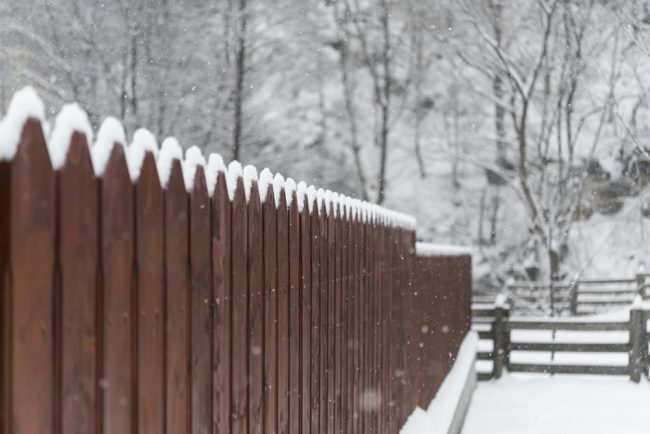
8 Reasons to Start Planning Your Spring Landscape Now
Does your fence look weather-beaten? The Canadian winter weather can be extreme on our exteriors surfaces, including fencing. Subpar temperatures, intense snowfalls, and uncontrollable moisture can cause certain fence materials to rot, lean, and crack. If your fence isn’t holding up this winter, learn here what could be undermining the integrity of your fence and what you can do to ensure you don’t have to replace it come spring.
Wood Rot
Are your wooden boards caving in or does your wood feel soft or spongy? It might have rotted. Wooden fencing needs to be waterproofed and repaired before winter comes. Otherwise moisture will get into the grooves and create rot and mold when the temperatures increase. Excess debris that rests up against your fence in the winter can also lead to moisture damage and rot, so be sure to keep your fence as clear as possible from any snow.
It’s Under Pressure
Is your fence sagging or warping? Snow and ice that sits up against your fence could be weakening its stability. High winds and temperature changes can also weaken it further, causing it to lean to one side. If this occurs, use a broom to brush off any snow and shovel it towards the middle of your yard so that it won’t pile up against the panels. If your fence doesn’t return to its original shape, you might need to replace it in the spring.
Soil Expansion and Contraction
As the ground beneath your fence freezes and thaws, the soil will expand and contract which can put pressure on the posts. As the posts start to shift, they can start loosening the soil underneath and cause the fence to lean to one side. You can try to fix this by adjusting the posts to be at least three feet under the frost line, but in most cases, you’ll need to replace your fence with a stronger material.
Loose Cement Footings
Posts that are set in concrete or gravel can also come under pressure in the wintertime, causing the footings to crack or move. In most cases, you can dig out the backfill and replumb the post. But considering that its winter, you’ll have to wait it out until spring, possibly allowing more damage to occur. If the footings have broken beyond repair or the posts have rotted away, you’ll likely need to replace some or all of the materials.
Rust Damage
Even durable iron fences can experience damage from winter moisture. If the protective coating wears away, the fence will start to rust which can weakens the materials and impact your curb appeal. Applying a rust neutralizer can help but if the rust has started to eat its way through the iron, your best bet is to install a new fence.
Not sure whether you need to replace a damaged fence? Contact us at Ideal Fence and we’ll come to inspect your current materials and make a recommendation. In the event that your fence has undergone serious winter-related damage, we can repair it or replace it for you. Contact us today!

